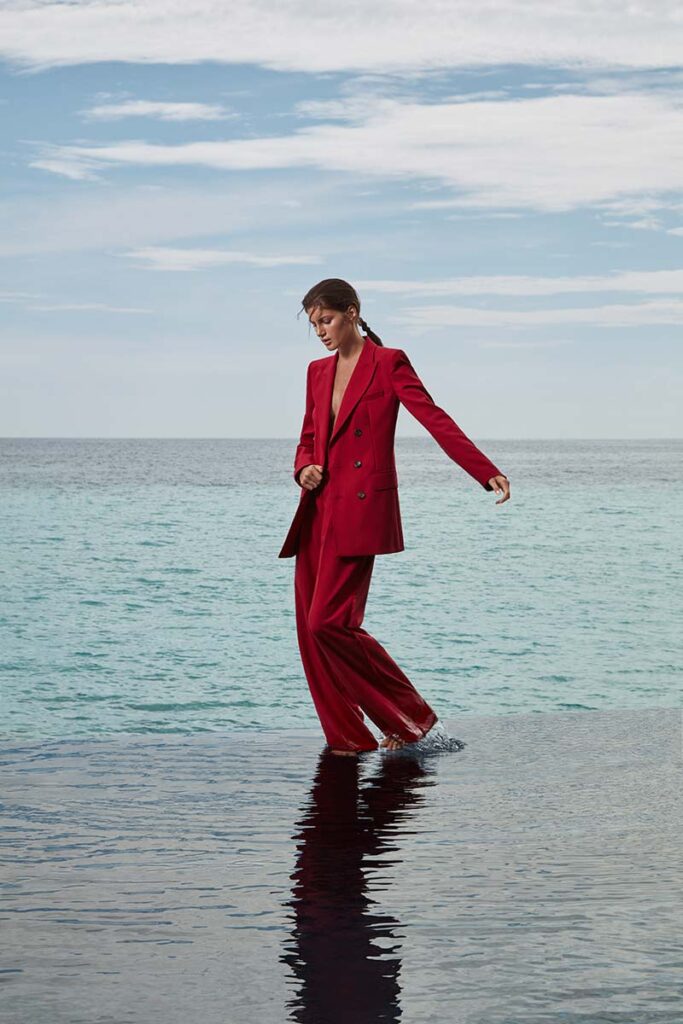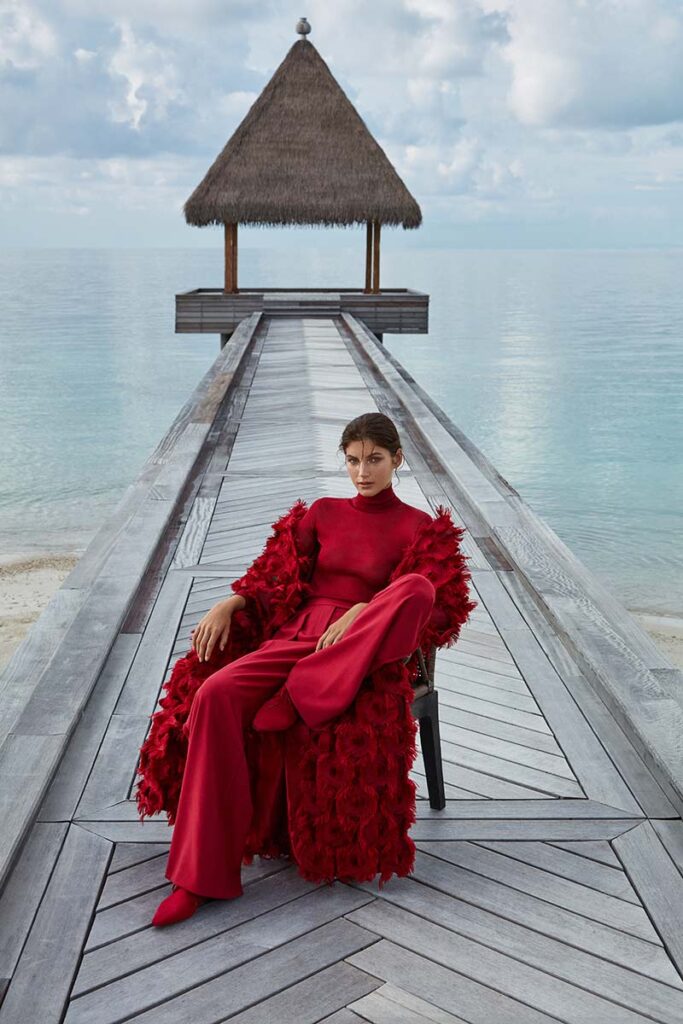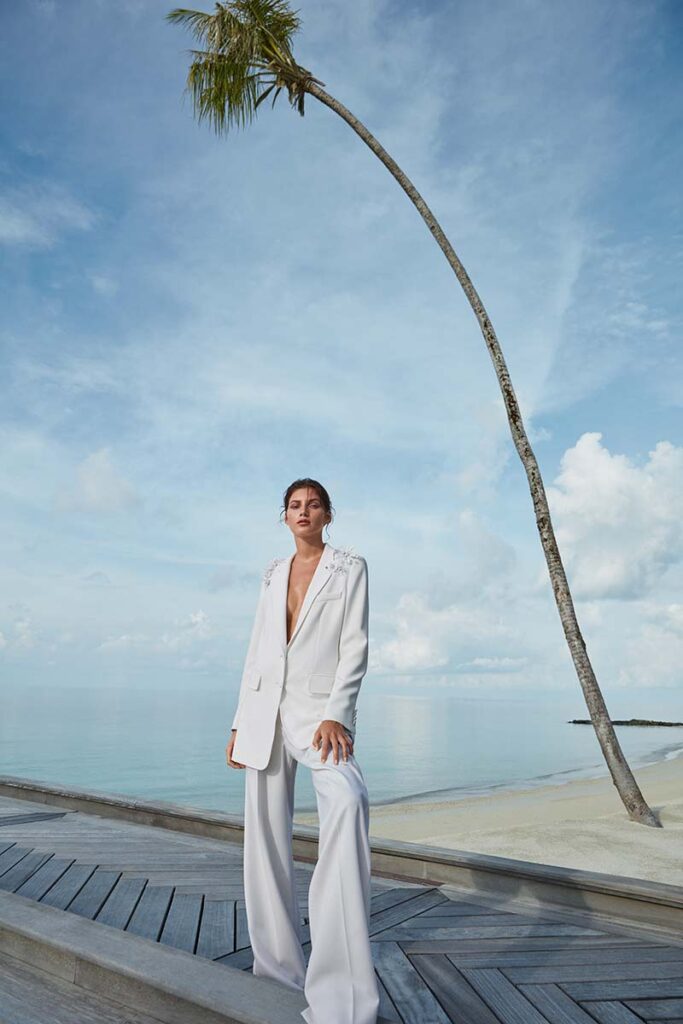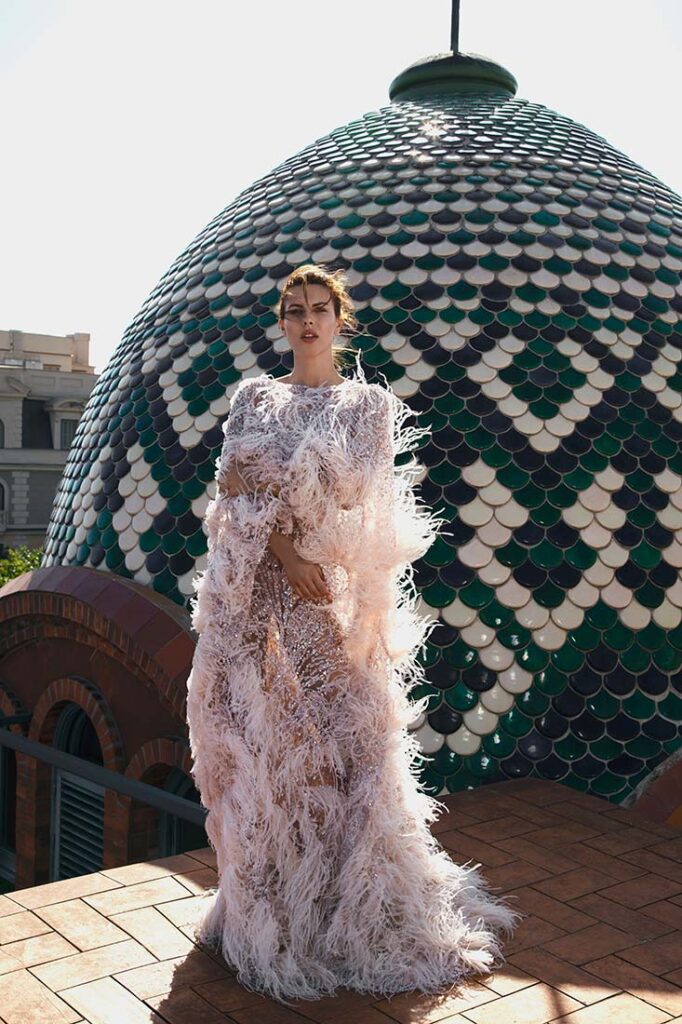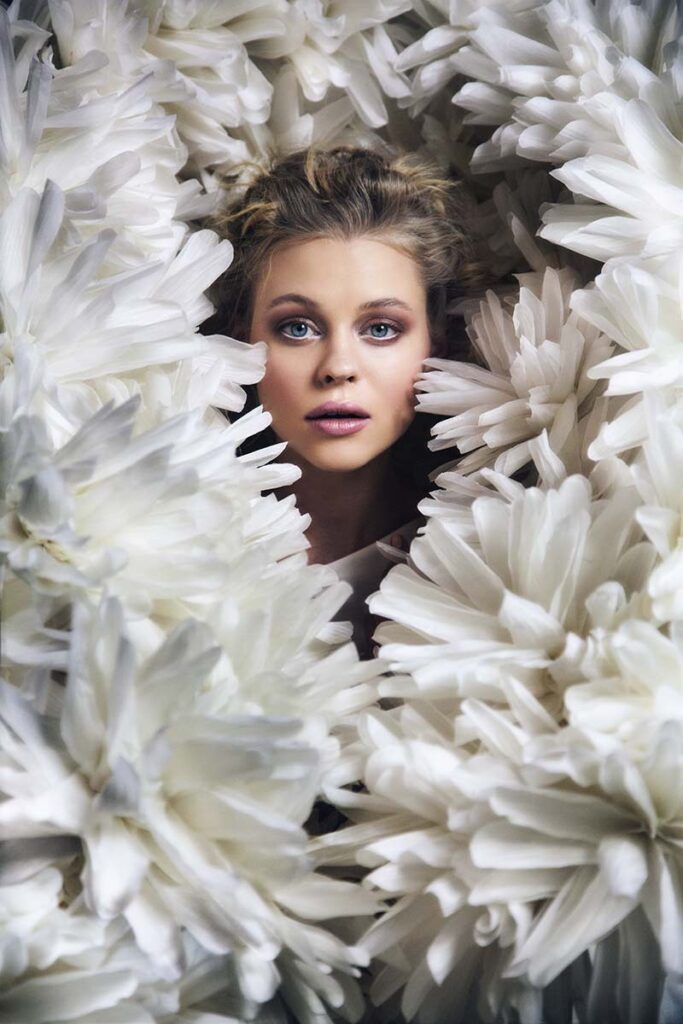An Exclusive Interview With
Jean Baptiste Fort
By José Jeuland
Jean -Baptiste Fort © All rights reserved

Jean-Baptiste’s passion was born in Los Angeles when he was 19. Since then, he has developed an international career in Fashion and Advertising photography.
Jean-Baptiste opened his own design agency in Barcelona, where he has been living and working since 2010.
He split his time between Paris, Barcelona, and Los Angeles.
Jean-Baptiste has become an established name within the fashion industry with an impressive client list.
He works for strong brands and magazines such as Vogue, Elle, Hola, Fhm, and L’Officiel, creating projects for prestigious agencies such as Ford or Elite or designers such as Triumph, BCBG maxazria, Tom Ford, Lanvin, Dior, Cavalli, Leonard, Celine, Hermes, etc.
It is a pleasure to feature an exclusive interview with one of the strongest names in the fashion photography field.
Jean -Baptiste Fort © All rights reserved.
José Jeuland: Hello, Jean Baptiste. Great to have an interview with you about your fabulous work. Let’s start with your background in photography. Did you study photography, or did your extraordinary high level come from autodidact learning?
Jean Baptiste Fort: Thank you for having me! I am delighted to be able to talk to you. I was self-taught, discovered photography in Los Angeles, and then it became a passion.
I spent days working on my technique, learning about the history of photography, looking for ideas… But, with enough motivation, I think anyone can learn photography the self-taught way!
J. J.: Do you come from an artistic family? Is photography a “Tradition” in your family?
J. B. F.: No, photography is not a family tradition, except for the classic family photos. My passion came naturally from my experiences and travels and is totally independent of my family environment.
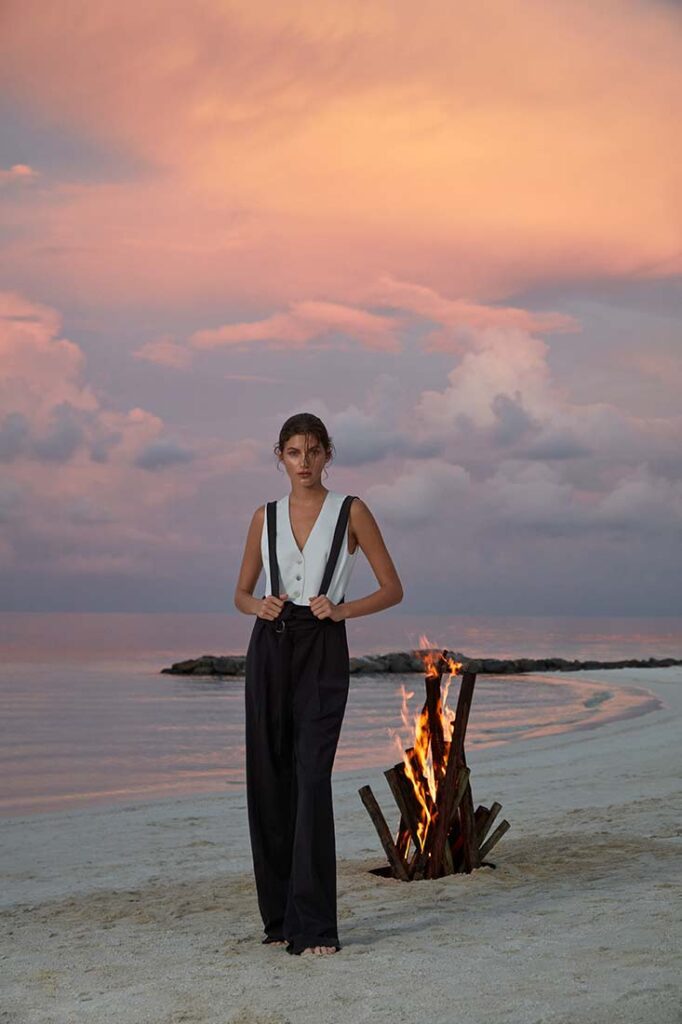
Jean -Baptiste Fort © All rights reserved.
J. J.: Why did you choose to establish your name in the Beauty and fashion industry in particular? Was there a specific style or niche that draws you to it?
J. B. F.: I’ve always been very interested in fashion and how it could allow us to express ourselves. Fashion is an art form in itself, and I wanted to capture that through my photographs. Fashion allows us to manifest ourselves, send messages, and show who we are.
For me, fashion is both a tool of expression and empowerment; it allows many people to give themselves confidence and show their personality and emotions. I wanted to represent this aspect of fashion through my photos.
J. J.: Your career started at a very young age by opening your design agency in Barcelona. Looking back at those days, Do you see it as a bold move? Where did the courage come from? What is the name of your design company? Or is it also under your name?
J. B. F.: Entrepreneurship always requires audacity; of course, you have to have the courage to take risks, but I love adrenaline!
My company is called “Snob Technologie SL,” and creating it was an excellent decision since it allows me to earn a living and thus be able to exercise my photography as I want. I don’t have to rely on the money from photography to make a living, allowing me to select only the projects I like without doing any by default.
J. J.: At what point in your career have you started doing a campaign for influential brands? What was the first project you did?
J. B. F.: My apprenticeship in professional photography was in Belarus for the Publicis agency and its international clients based locally (Renault, Triumph).
These first jobs allowed me to understand the client’s expectations and rectify and move from an amateur to a professional perspective. I did several campaigns for Triumph lingerie, where I was able to learn light work and model management.

Jean -Baptiste Fort © All rights reserved.
“You must learn to question your work sometimes in order to improve.”
– Jean-Baptiste Fort
J. J.: How did you approach that first shoot? And did you approach it differently than the way you would approach it now?
J. B. F.: I was quite nervous about the idea of doing this shoot; the days before, my feelings were divided between excitement, impatience, and apprehension because I wanted the result to be absolutely perfect.
Finally, once I arrived at the shooting location, everything came together naturally with the Camera in hand! The photographer’s instinct overcame the fear, and I was not stressed. Now I know what to expect during a photo shoot, so I am much more peaceful.
I also know better how to guide the models and crews to get the desired result.
J. J.: During the past years, you did so many impressive shootings; which was the most exciting for you? What is the project you are the proudest of?
J. B. F.: One of the most outstanding projects was my photoshoot for ELLE Russia, done in the Maldives in partnership with a renowned hotel.
The organization was complex since the whole team and equipment had to be moved to the Maldives. This is the type of shoot that is prepared months in advance! This project was calibrated to the millimeter.
The landscape and the hotel were heavenly, allowing us to take some great pictures despite the not always clement weather! We had some rain (in the Maldives, yes!), but it allowed us to shoot a different motion than what was planned, and the result was even more satisfying.
I’m very grateful for the chance to shoot in such idyllic locations.
J. J.: According to you – what makes a “good photographer”?
J. B. F.: First of all, what is most important for a photographer is to have an eye. A good photographer must always observe the world around him in search of new ideas and inspirations. You have to work on your vision; in the long run, the photographer sees the world differently because he can imagine a photoshoot at each place he puts his eyes.
Beyond the observation, the essential is the work. As Picasso said, “Talent is not innate; it is acquired.” The notion of work is paramount for a photographer to perfect his artistic sensitivity and technique and build his universe.
J. J.: What cameras and lenses do you use?
J. B. F.: Canon EOS 5DS R. EF24-70mm f/2.9L II USM. 50mm at un 90-200L. My Camera is a Canon EOS 5DS R; I use different lenses depending on the effect I desire, EF24-70mm f/2.9L II USM, a 50mm, and a 90-200L. I also use a Contax G2, a Yashica T5, and a few polaroids, but I don’t post a lot with these Cameras.
J. J.: Do you manage your post-production? Can you describe the Post-Processing workflow?
J. B. F.: It all starts with the selection of the photos. If the shoot is in a studio, the selection is made on the spot with the shoot teams (the Camera being connected to a screen). Otherwise, I try to select my photos later on the same day. I usually proceed by elimination in 3-4 steps with Adobe Bridge;
I often come back on photos already selected.
The process is different depending on if the shoot is commercial or editorial. Commercial shoots leave me less choice in the decision of the pictures. The favorite photos of the stylist, the client, or the photographer are often different because each one seeks to highlight his own work… so it is necessary to target the use of the pictures (highlighting a garment, a place, etc.) to make the right choice.
Once the photos are selected, I usually proceed to a color correction and proceed to post-production via Adobe Photoshop.
J. J.: What would be your advice for a rising fashion photographer? What would you teach him or her about this industry?
J. B. F.: If I had to give advice, valid for any type of photographer, it would be to train and work constantly and regularly.
It is also necessary to know how to accept and take into account the criticisms; it is like that as one progresses, you must learn to question your work sometimes, in order to improve.
Finally, the most important thing is determination and consistency, failures can happen, but you have to know how to take advantage of them and not lose sight of your objectives.
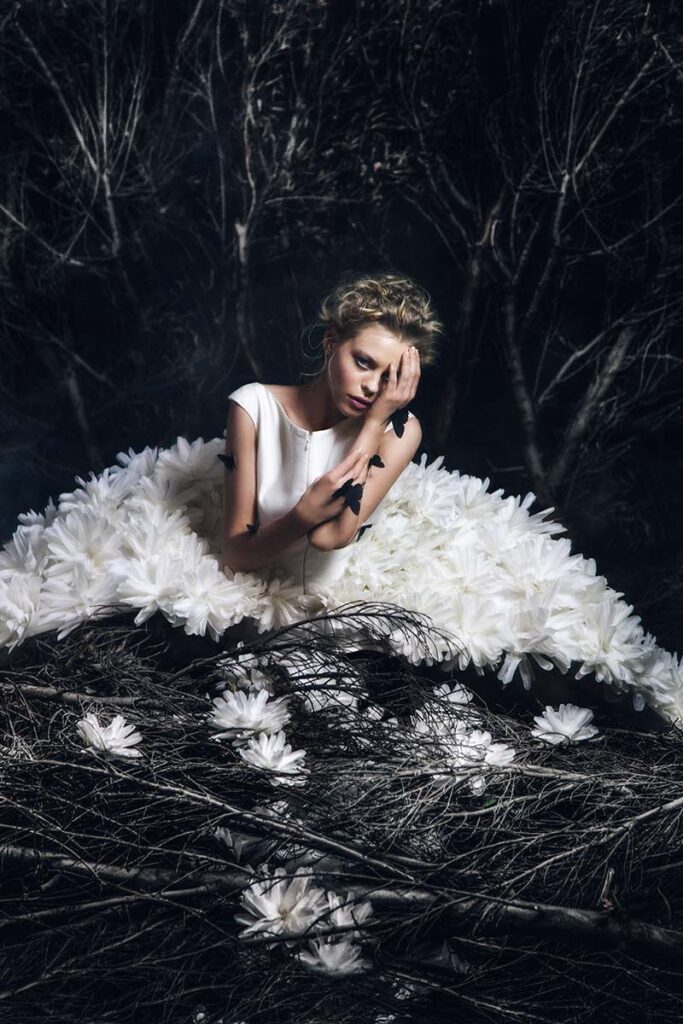
Jean -Baptiste Fort © All rights reserved.
J. J.: Let’s pretend at a specific moment you will decide – out of the blue – to drip down this career in photography. Hypothetically… Which way would you go then? What path would you choose instead?
J. B. F.: Beyond being a photographer, I am also an entrepreneur! If I were to stop taking pictures, I would focus 100% on my business. However, I would miss the artistic aspect that photography brings to my life, which allows me to balance my entrepreneurial and artistic sides.
J. J.: How often do you shoot big projects? How many people are on your team?
J. B. F.: It depends on the period, but generally, we do 5-7 projects per year, with more than 10 people involved in each shoot. Every shoot requires a makeup artist, a hairstylist, a stylist, a set designer, a photographer’s assistant, and of course, a model.
J. J.: Many photographers say that the good time of photography was before in terms of business, do you agree?
J. B. F.: I think that times are changing, and every profession is affected. Social networks and smartphones have indeed come to shake up our profession. Now, we are confronted with hundreds of pictures per day, often taken with smartphones, which directly compete with real cameras. The profession of the photographer has become more challenging because it is now accessible to everyone.
However, I think we have to live with the times and that these new technologies also enable photographers to get the visibility they would not have had before. I believe that Instagram and other social networks can open many opportunities for photographers, as long as you know how to use them well.
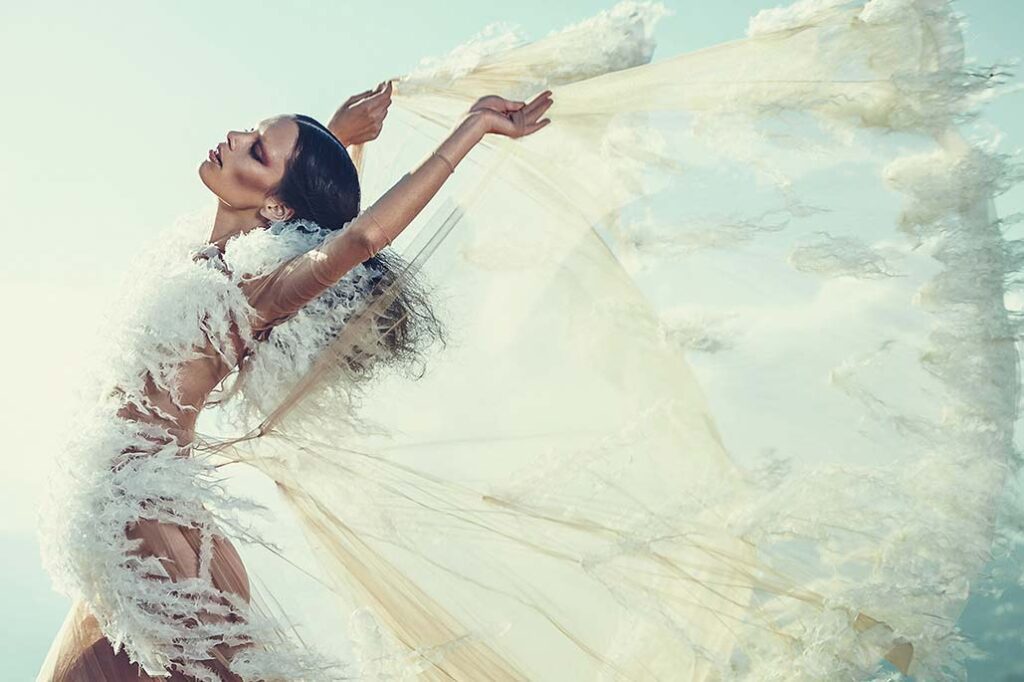
Jean -Baptiste Fort © All rights reserved.
J. J.: How do you get your clients?
J. B. F.: It depends on the shootings! Sometimes magazines or brands come directly to me; other times, when I have projects in mind, I propose them to magazines or brands and organize them from start to finish, according to their needs.
J. J.: Which country has the most fashion and advertising photography opportunities?
J. B. F.: Each country has its own magazines and brands that can represent opportunities in photography. However, Emirates and Lebanon are very strong with solid brands and magazines, representing many possibilities. I have shot many times in Beirut for the designer Jean-Louis Sabaji and did editorials for Vogue Arabia.
J. J.: Did the Covid situation affect your activity? What are the consequences?
J. B. F.: The pandemic has, of course, affected all sectors. Concerning my photography activity, some shoots had to be canceled because of the different confinements. My shoots often take place internationally, so the most complicated thing to manage is to be able to go on location with the multiple border closures and the required tests.
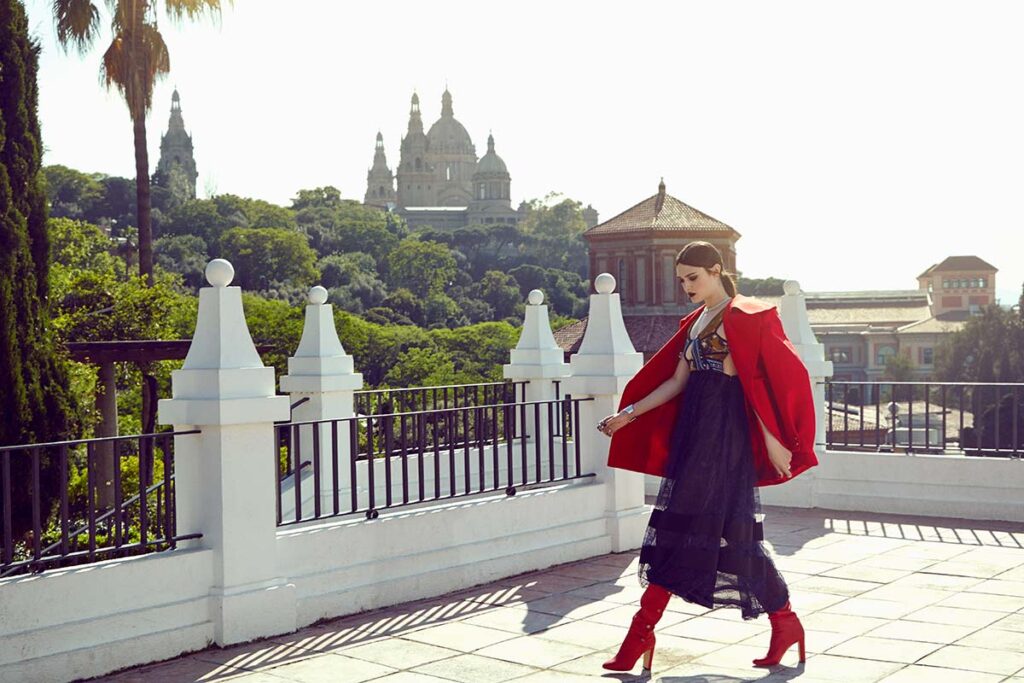
Jean -Baptiste Fort © All rights reserved.
J. J.: If there is a place, a person, or a concept that you will love to photograph and you have not done it yet. What it’ll be?
J. B. F.: I still have many ideas about shootings, more than I would realize! I’ve been lucky enough to travel a lot as a photographer, but I haven’t yet had the opportunity to shoot in Latin America.
I think this continent is full of beautiful landscapes to explore in a shoot, and their culture is rich and colorful, which could be very interesting for a shooting.
Website: Jbfort.com
Instagram: @Jbfort_photography

